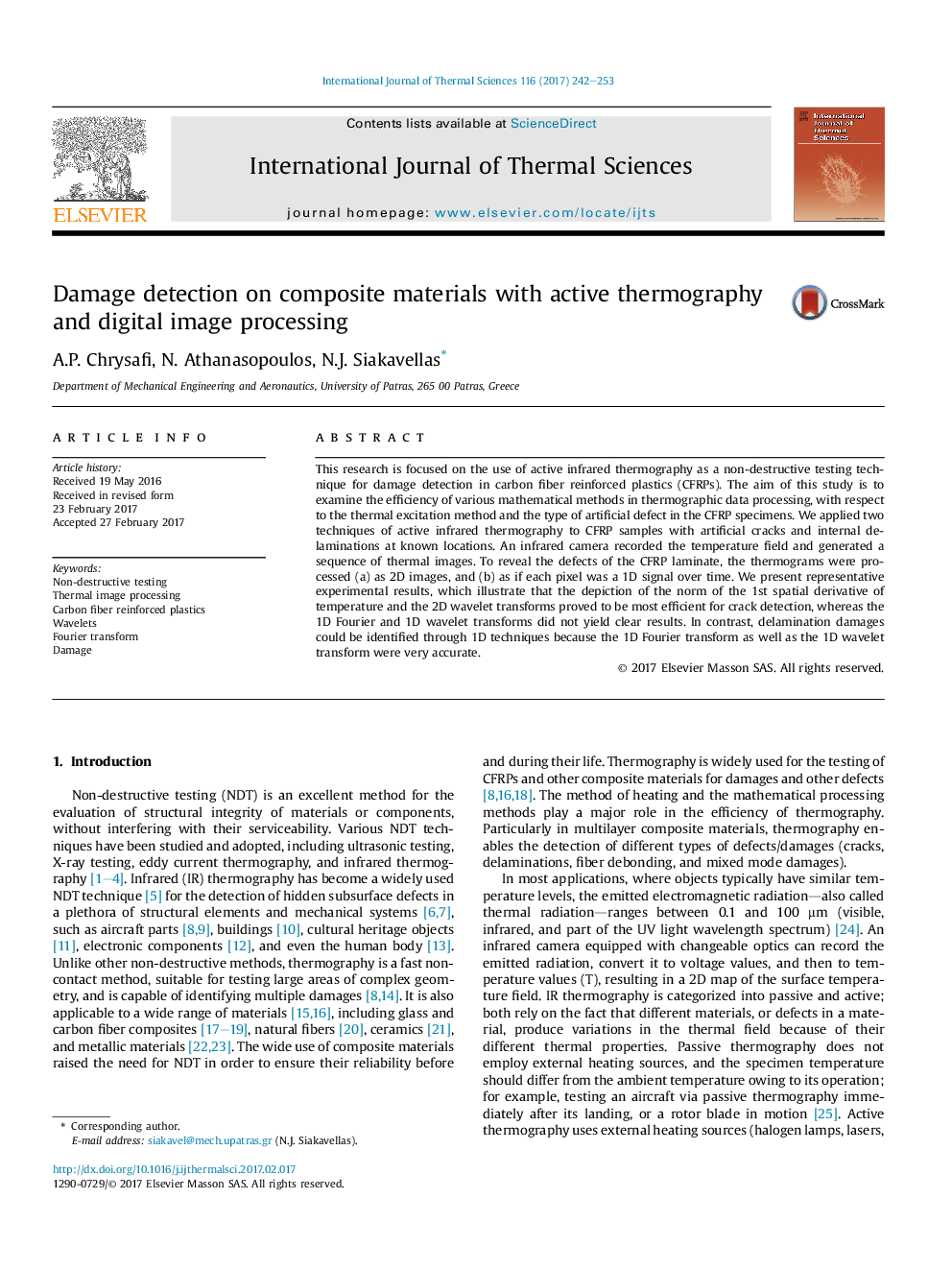| Article ID | Journal | Published Year | Pages | File Type |
|---|---|---|---|---|
| 4995341 | International Journal of Thermal Sciences | 2017 | 12 Pages |
Abstract
This research is focused on the use of active infrared thermography as a non-destructive testing technique for damage detection in carbon fiber reinforced plastics (CFRPs). The aim of this study is to examine the efficiency of various mathematical methods in thermographic data processing, with respect to the thermal excitation method and the type of artificial defect in the CFRP specimens. We applied two techniques of active infrared thermography to CFRP samples with artificial cracks and internal delaminations at known locations. An infrared camera recorded the temperature field and generated a sequence of thermal images. To reveal the defects of the CFRP laminate, the thermograms were processed (a) as 2D images, and (b) as if each pixel was a 1D signal over time. We present representative experimental results, which illustrate that the depiction of the norm of the 1st spatial derivative of temperature and the 2D wavelet transforms proved to be most efficient for crack detection, whereas the 1D Fourier and 1D wavelet transforms did not yield clear results. In contrast, delamination damages could be identified through 1D techniques because the 1D Fourier transform as well as the 1D wavelet transform were very accurate.
Keywords
Related Topics
Physical Sciences and Engineering
Chemical Engineering
Fluid Flow and Transfer Processes
Authors
A.P. Chrysafi, N. Athanasopoulos, N.J. Siakavellas,
